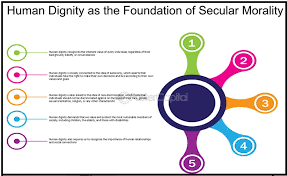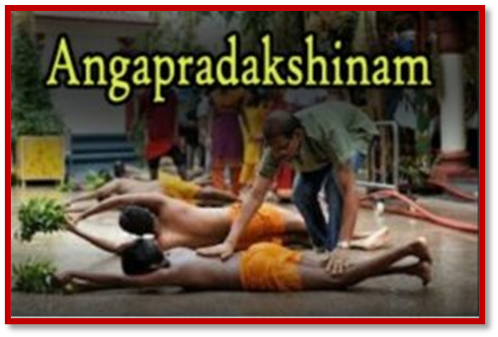The Hindu : Page 06
Syllabus : GS 2- Indian Polity – Judiciary

Context
- The article discusses a controversial Madras High Court ruling allowing the religious practice of angapradakshinam, highlighting debates on religious freedoms, judicial consistency, and constitutional principles in India’s legal landscape.
The aspect of religion
- “What is religion to one is superstition to another,” said Chief Justice Lathman of Australia in Adelaide Company of Jehovah’s Witnesses Inc vs Commonwealth (1943).
- Religion has been at the centre of human societal existence since time immemorial.
- Man is incurably religious; Indians more so. Right now, we are in a rush hour of god with religiosity on the rise and spirituality on the decline.
- In a significant yet controversial order in P. Navin Kumar (2024), by Justice G.R. Swaminathan of the Madras High Court, the religious practice of angapradakshinam has been allowed.
- The practice involves rolling over the banana leaves on which other devotees of Sri Sadasiva Brahmendral of Nerur village in Tamil Nadu had partaken food. The order overruled the 2015 order of Justice S. Manikumar.
- In 2015, the petitioner had argued that the practice involved Dalits and non-Brahmins rolling over on leftover plantain leaves even though the district administration had disputed the allegation of caste discrimination.
- Justice Manikumar had relied on the Supreme Court of India’s order, in State of Karnataka and others vs Adivasi Budakattu Hitarakshana Vedike Karnataka, where the top court had stayed a 500-year-old ritual on similar lines where mainly Dalits used to roll over the leaves.
- Justice Swaminathan refused to follow the 2015 order as temple trustees which used to organise the event were not made parties, and thus not heard.
- Moreover, not only Dalits but even others too rolled over the leaves and thus no caste discrimination was there.
Revival of a debate
- The order has revived the debate on issues such as what is religion; how essential practices of any religion are to be determined, and how far the judiciary has been consistent in such determination.
- Justice Swaminathan, in a well-researched order, has cited all the important judgments of the Supreme Court to reach the conclusion that the petitioner, P. Navin Kumar — who has taken the vow of angapradakshinam, and is entitled to execute it as part of his freedom of religion under Article 25 and right to privacy under Article 21 and human dignity — is in no way undermined in such a practice.
- He even held that rolling over on used banana leaves is part of the freedom of movement under Article 19(1)(d).
- Thus, like other cases, no questions were being asked whether it is an essential and integral practice of the Hindu religion. Or whether it is a mandatory practice and not a mere superstitious practice.
- He has quoted the Krishna Yajur Veda and Bhavishyapurana which describe this practice as a noble act, but every noble act cannot get the high status of a mandatory act.
The subject of essential practices
- The framers of the Indian Constitution had subordinated the freedom of religion to all other fundamental rights.
- It has further been subjected to public order, health and morality, with additional powers being given to the state to bring in social reforms.
- The courts have further restricted the freedom to only the ‘essential religious practices’.
- The leading Supreme Court judgment on the freedom of religion was Sri Shirur Mutt (1954) where the Court had observed that Article 25 guarantees freedom not only to entertain such religious belief as may be approved of by one’s judgment and conscience, but also to exhibit his belief in such outward acts as he thinks proper.
- The Court further held that religion does prescribe rituals, ceremonies and modes of worship which are regarded as an integral part of religion.
- The Court was categorical in saying that ‘what constitutes the essential part of religion is primarily to be ascertained with reference to the doctrines of that religion itself’.
- In subsequent years, the Court became inconsistent in its determination of essential religious practices and moved away from looking at a particular religion to decide its essential practices and brought in its own rationality.
- In Gramsabha of Village Battis Shirala (2014), a particular sect claimed the capturing and worship of a live cobra during nagpanchnami to be an essential part of its religion.
- They placed reliance on the text of Shrinath Lilamrut which prescribed such a practice.
- The court relied on the more general Dharmashastra text to rule that since there was no mention of capturing a live cobra, it could not be an essential practice of the petitioners’ religion.
- The ‘essentiality test’ reached absurd levels in M. Ismail Faruqui (1995) where the top court was dealing with the issue of the state acquiring the land over which the Babri Masjid once stood.
- The court held that while offering of prayers is an essential practice, the offering of such prayers in the mosque is not unless the place has a particular religious significance in itself.
- Everyone knows congregational prayer is central to Islam and that mosques are an essential means to achieve this objective. Yet, the mosque was not held essential.
Conclusion
- Balancing religious freedoms with societal interests and constitutional values remains a critical challenge for Indian judiciary.
- The debate sparked by Justice Swaminathan’s ruling underscores the ongoing evolution and complexity in defining and protecting essential religious practices within a secular constitutional framework.
Practice of angapradakshinam
- Angapradakshinam is a religious practice observed in some Hindu traditions, notably at the Sri Sadasiva Brahmendral temple in Tamil Nadu.

- It involves devotees rolling over banana leaves that were previously used by others to consume food.
- This act is believed to be a form of reverence and purification.
- Recently permitted by the Madras High Court, the practice has sparked debates on its religious significance, hygiene concerns, and compatibility with constitutional rights in India.
The Durgah Committee, Ajmer Case (1961)
- In the landmark case of The Durgah Committee, Ajmer (1961), the Supreme Court of India ruled that Article 25 protects only essential and integral religious practices, not those stemming from superstitious beliefs.
- The judgement emphasised determining essential practices based on the core tenets of the religion itself, marking a pivotal moment in defining the scope of religious freedoms under the Indian Constitution.
Essentiality Test
- The “essentiality test” is a judicial criterion used to determine whether a religious practice qualifies for legal protection under Article 25 of the Indian Constitution.
- It requires practices to be integral to the religion, as defined by its doctrines and beliefs, rather than being mere superstitious or cultural accretions.
- This test aims to balance religious freedoms with public order, health, and morality concerns, ensuring alignment with constitutional principles in India’s secular legal framework.



